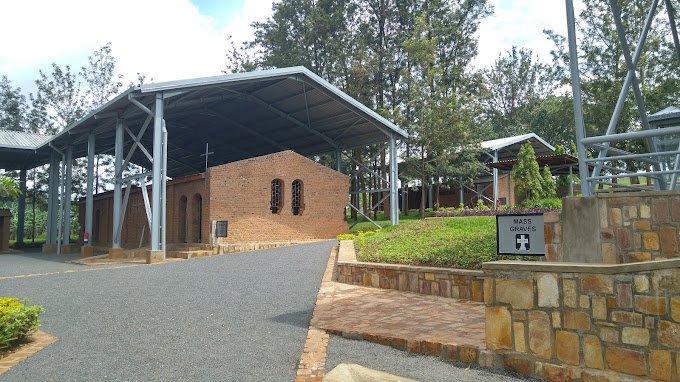Kenya’s Islam Heritage: Exploring the Historic Mosques of Lamu

Lamu, a small island located off the northeastern coast of Kenya, is a place where history, culture, and religion converge to create a unique and captivating experience for visitors. As one of the oldest continuously inhabited towns in Kenya, Lamu has long been a center of Islamic culture and scholarship in East Africa. The town’s narrow streets, Swahili architecture, and ancient mosques tell the story of a community that has thrived for centuries, deeply rooted in Islamic traditions.
The rich Islamic heritage of Lamu is perhaps best exemplified by its historic mosques. These places of worship are not only religious centers but also architectural gems that offer a glimpse into the past. In this article, we will explore the historic mosques of Lamu, delving into their history, significance, and the role they play in the lives of the local Muslim community.
The Origins of Islam in Lamu
Islam was introduced to the East African coast by Arab traders as early as the 7th century. Over time, Lamu became a key port in the Indian Ocean trade network, attracting traders, scholars, and settlers from the Arabian Peninsula, Persia, and the wider Islamic world. The town’s strategic location made it a vital hub for commerce, culture, and religion.
By the 14th century, Lamu had established itself as an important center of Islamic learning and culture. The town’s ruling elite were devout Muslims who built mosques, madrassas (Islamic schools), and other religious institutions. Lamu’s Islamic heritage continued to flourish under the Omani sultanate in the 18th century, further solidifying its status as a beacon of Islamic culture in East Africa.
Riyadha Mosque: The Heart of Islamic Learning in Lamu
One of the most significant mosques in Lamu is the Riyadha Mosque, which has played a central role in the town’s religious life for over a century. Founded in 1892 by the revered Islamic scholar Habib Salih bin Alawi Jamal al-Layl, the Riyadha Mosque is not only a place of worship but also a center of Islamic education and spirituality.
Habib Salih, a descendant of the Prophet Muhammad, arrived in Lamu from the Hadhramaut region of Yemen and quickly became a respected figure in the local community. He established the Riyadha Mosque as a center for the study of Islamic theology, law, and Sufism. Under his leadership, the mosque became a beacon of Islamic learning, attracting students from across the East African coast and beyond.
The architecture of the Riyadha Mosque reflects the influence of Arab and Swahili styles, with its whitewashed walls, arched doorways, and intricately carved wooden details. The mosque’s serene courtyards and prayer halls provide a peaceful environment for reflection and devotion.
One of the most significant events associated with the Riyadha Mosque is the annual Maulidi Festival, a celebration of the Prophet Muhammad’s birthday. The festival, which takes place during the Islamic month of Rabi’ al-Awwal, attracts thousands of pilgrims and visitors to Lamu. The celebrations include prayers, recitations of poetry, processions, and communal feasts, all centered around the Riyadha Mosque. The Maulidi Festival is a testament to the enduring spiritual and cultural significance of the mosque in Lamu.
The Lamu Fort Mosque: A Blend of History and Faith
Another important religious site in Lamu is the Lamu Fort Mosque, located adjacent to the historic Lamu Fort. The fort itself was built between 1813 and 1821 by Sultan Fumo Madi ibn Abi Bakr, the ruler of Lamu, to protect the town from external threats. Over time, the area around the fort became a center of communal life, with the construction of the Lamu Fort Mosque.
The Lamu Fort Mosque, like many others in Lamu, is a blend of Swahili and Islamic architectural styles. The mosque’s simple yet elegant design features a large central prayer hall, surrounded by smaller rooms for study and reflection. The mosque’s minaret, though modest in height, is a distinctive feature of the Lamu skyline.
The proximity of the mosque to the fort highlights the close relationship between religion and governance in Lamu’s history. The Lamu Fort Mosque has served as a place of worship for generations of residents and continues to be an important religious center for the local Muslim community.
Pwani Mosque: A Testament to Swahili Craftsmanship
The Pwani Mosque, located in the heart of Lamu’s old town, is another historic mosque that reflects the town’s rich Islamic heritage. Built in the 18th century, the mosque is known for its intricate wooden carvings and Swahili craftsmanship. The mosque’s mihrab (a niche in the wall indicating the direction of Mecca) is particularly notable for its detailed carvings and decorative motifs, which showcase the skill and artistry of Lamu’s craftsmen.
The Pwani Mosque, like other mosques in Lamu, serves as a focal point for the local community. It is a place where residents gather for daily prayers, religious education, and communal activities. The mosque’s architecture, with its thick coral stone walls and wooden beams, is a testament to the enduring traditions of Swahili building techniques.
Shela Mosque: A Spiritual Retreat by the Sea

Shela, a village located a few kilometers from Lamu town, is known for its pristine beaches, tranquil atmosphere, and historic mosques. The Shela Mosque, built in the 19th century, is one of the village’s most important religious sites. The mosque’s location, overlooking the Indian Ocean, provides a serene setting for prayer and reflection.
The Shela Mosque is characterized by its simple yet elegant design, with clean lines and minimal ornamentation. The mosque’s courtyard, shaded by palm trees, offers a peaceful retreat for worshippers and visitors alike. The mosque’s proximity to the sea also adds to its spiritual ambiance, as the sound of the waves provides a soothing backdrop to prayers.
Shela village itself is a popular destination for travelers seeking a more laid-back experience compared to the hustle and bustle of Lamu town. The village’s mosques, including the Shela Mosque, are integral to the local community’s way of life and offer visitors a glimpse into the spiritual traditions of the Swahili people.
The Role of Mosques in Lamu’s Community Life
Mosques in Lamu are not just places of worship; they are also centers of community life. In addition to daily prayers, mosques in Lamu host a range of religious and social activities, including Quranic studies, weddings, and communal feasts. The mosques also serve as spaces for resolving disputes and making important community decisions.
The strong sense of community in Lamu is closely tied to the Islamic faith, which emphasizes values such as charity, compassion, and social justice. These values are evident in the way the residents of Lamu care for their mosques, maintain their traditions, and support one another.
The historic mosques of Lamu are also a testament to the town’s resilience in the face of challenges. Despite the pressures of modernization and globalization, Lamu has managed to preserve its Islamic heritage and maintain its status as a center of religious and cultural significance.
Conclusion: A Living Heritage
The historic mosques of Lamu are more than just architectural landmarks; they are living symbols of the town’s rich Islamic heritage. Each mosque tells a story of faith, community, and cultural exchange that has shaped Lamu’s identity over the centuries. Whether you are a devout Muslim on a pilgrimage or a curious traveler seeking to explore Kenya’s cultural treasures, the mosques of Lamu offer a unique and enriching experience.
As you walk through the narrow streets of Lamu, you will be transported back in time to a world where religion, culture, and history are intertwined. The mosques of Lamu stand as a testament to the enduring legacy of Islam in East Africa and the vibrant spirit of the Swahili people. They are a reminder that, in Lamu, the past is never far away, and the traditions of faith and community continue to thrive in the present.
Some of our religious packages
2 Days Uganda Martyrs Trail Namugongo Catholic Shrine Tour
3 Days smallest church itinerary in Uganda
3 Days Journey to Namugongo shrine
4 Days Uganda Spiritual Journey
5 Days Uganda Martyrs Pilgrimage
6 Days Spiritual Pilgrimage Uganda
7 Days Uganda Martyrs Pilgrimage Tour
LONG UGANDA SAFARIS
7 Days Gorilla Chimps & Big 5 Safari
5-Day Gorilla Trekking Chimp Trek
6 Days Gorilla, Chimps and wildlife
5 Days Murchison falls and Gorilla



Leave a Reply